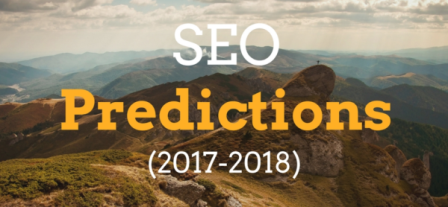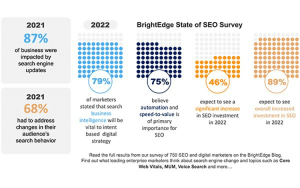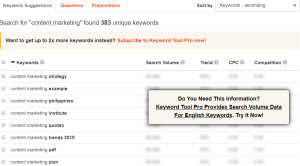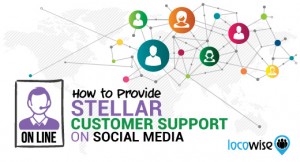
The fast changing SEO landscape, driven by customer expectations and usage together with Google’s algorithm updates, has compelled internet marketers to make strategic modifications. These days, usual SEO best practices like link buying, keywords stuffing etc are considered useless. As 93% of total online experiences start with search, adoption of best practices in SEO and digital marketing will be of immense importance for any website to succeed. However, as SEO has withstood various major ups and downs, it can be concluded that it would be there for more years to come.
1. Accelerated Mobile Pages will play important role in SEO

Accelerated Mobile Pages (AMP) is the open source initiative that empowers publishers to develop mobile optimized content. If compared side-by-side, most of the aspects of a desktop site become useless when it’s opened in a mobile device. For the publishers, providing SEO boost to AMP content will become critical because a slow-loading site affects SERP rankings severely. A fast-loading site not only enjoys better visibility but lowers your bounce rate too.
2. The more Interstitials Ads, The more it would Harm

After 10th January 2017, pages, where visitors won’t be able to access content easily may not experience high SERP rankings. Here’re some methods that lower the content’s accessibility.
- Exhibiting a standalone advertisement before a visitor can have access to the content.
- Displaying a popup that protects the main content.
- Implementing a layout where the main content is kept in-lined below the fold of the page.
Again, here’re some methods that can used to bypass the new signal.
- Login dialogs where content isn’t openly indexable like emails that are covered by a paywall.
- Interstitials that become visible to respond to legal obligations like age verification, cookie usage etc.
- Banners that occupy minimum amount of space and are easily removable.
3. Voice Search will Take Over

As per SEO predictions by many experienced professional from this industry quotes that unlike a traditional desktop keyword search using quotation marks, modifiers, autocomplete and exclusions, voice search is a faster, hands-free option where you use regular spoken English to pose a question. 41% of adults and 55% of teenagers are already using voice search daily, and the figures are set to rise steadily. Technological improvements have brought down the speech recognition word error rate from 20% (two years ago) to 8% (at present), which has given voice search more credibility. With the growing use of voice search, short tail keywords will give way to long tail, conversational keywords as voice searches will increasingly use natural phrases common in everyday conversation.
4. Artificial Intelligence

Artificial intelligence (AI) can be classified into three categories namely Artificial Narrow Intelligence (ANI) which refers to a solitary thing (like a win over the chess world champion); Artificial General Intelligence (AGI) where the AI can do everything like a human; and Artificial Superintelligence (ASI) where the performance of the AI is beyond a single human’s capabilities. With AI, search engines like Google can understand additional search queries likely to happen after initial search better and provide best results for search queries based on user engagement metrics rather than whether complete page optimization is done with off-page and on-page tactics. Using AI, Google’s RankBrain will consider non-traditional ranking factors to give more relevant results.
5. Schema – Structured Data

Almost 19% of all search queries get direct answers or rich snippets from Google and the numbers are set to grow in 2017, making it important to have structured data on your websites by tagging your web page data with schema markup. For search engines and third party programs, accessing, understanding and processing standardized data on page is easier than doing it on a regular web page. Structured data, which you can add directly to your web page’s HTML markup, help search engines generate rich snippets (small packets of information), which are then showed in search results. Schema helps search engines to interpret your web pages more efficiently so that visitors can easily find the answers to their queries. Schema becomes especially helpful when it comes to displaying rich snippets for local businesses, AMP articles, reviews, music etc.
6. Visual Search might be that Exciting

As compared to keyword-matched search where the results depend a lot on the how well the searcher describes them, images are “read” in visual search to spot shape, color, dimensions and even text to identify product and brand names. Interestingly, images are processed by our brain 60,000 times faster than text. After three days, just 10% of auditory stimuli are retained by customers against 65% of visual stimuli. Content with relevant images encourage 80% more consumers to engage and get 94% more views than content sans images. For 94% of consumers, images act as a decisive factor in making a purchase. All these make visual search important for SEO and e-commerce.
7. App Marketing

Apps not only help you to reach and engage users anywhere but also but give useful insight into user behavior and other data that you can use to create more valuable and relevant experiences for your target audience. 2015 witnessed a significant increase in app launches (11.5 to 13.3) and the average time in app too leaped by 11%, suggesting frequent and lengthy interaction of people with apps. The trend is set to continue in 2017.
8. UX and User Optimization

Google’s Webmaster Guidelines emphasize the importance of focusing on users even in SEO optimization. Focusing on user experience mean you need more than mere lines of well constructed codes. You need to attract your target group of people, stimulate their interest, address their pain points and concerns, and finally, encourage them to get converted into your clients. Unlike SEO in the past that focused merely on site and data to increase content visibility across search engines, the future will see more emphasis on user experience while many traditional SEO strategies and techniques will perform just supportive roles.
9. Hyper Local SEO
In 2016, search engines will allow more narrow local searches that users perform on the go with their mobile devices. As their algorithms continue to evolve, the search engines might show results within a specific distance from the user making the search. For example, search results for “pizza restaurant in Manhattan” can display results within a 500-yard radius of the searcher using location Meta data shared with the search engine. Thus, instead of a restaurant with higher ratings on the other side of Central Park, the local businesses in the searcher’s vicinity would get a prioritized rating. Thus, businesses and brands need to put their location details along with information on access, positioning and transport options for Google’s local search optimization. Apart from being top results for specific search phrases, you also need to be visible to people within a walking distance of your restaurant or store.
10. Agile Marketing
This involves cooperation between teams where they identify high value projects and focus their collective efforts on completing them with mutual cooperation, measuring their impact, and then improving the results constantly and incrementally over time. From responding to market changes fast and testing lots of things while repeating the successful ones, to producing rapid campaigns that can be tested and optimized over time, justifying project and campaign choices backed with hard data, possibilities of agile marketing are almost endless.
11. Epic Content
After you have worked on the keywords you need to focus on, your next job is to create original content. You need to ensure two separate urls of your site don’t have the same content as duplicate content isn’t good for SEO. You should also refrain from republishing content taken from other sites as search engines may rate your pages adversely and your site’s search rankings may even suffer a complete loss. Sites whose content you copy and republish may even sue you for copyright infringement. All these make it important to create your own content.
12. Virtual Reality

Virtual reality brings several benefits to marketers when it comes to increasing awareness and engagement. Let’s have a look at the core benefits of VR.
- Impactful: The intensity of virthttp://www.forbes.com/sites/forbesagencycouncil/2016/08/15/how-virtual-reality-can-revolutionize-digital-marketing/#2507d291b06aual reality experience is much useful than conventional media generated experiences.
- Immersive: Users experiencing VR become completely immersed in the site’s content with lesser distractions.
- Memorable: As human brain is more efficient in remembering occurrences linked with locations, VR leaves a long lasting impression in the audience’s mind.
- Novel: As VR is a comparatively new technology, early adoption of it will help to attract more leads.
13. Social Search

In the recent years, social media has emerged as an extremely powerful tool for internet marketers and its effectiveness in ecommerce and customers’ buying decision is rapidly increasing. However, today, having a “follower” or “fan” of your brand doesn’t ensure that your every post, promotion etc has been viewed. Marketers need to ensure that their brands are appearing high in various social search results and they’re easily findable on different social networks. As in 2016, brands are focusing on optimizing their sites’ content for social search and increasing visibility in search engine results. In 2017, this trend is going to continue.
14. Marketing Automation
Marketing automation helps to automate various marketing tasks. Internet marketers’ deliverables include different repetitive actions such as social media tasks, emails etc. With strategic implementation of marketing automation, marketers would be able to perform targeted and scheduled emails sending jobs and social media posts. However, many marketing automation software come equipped with the facility of performing various offline marketing tasks like sending text messages, making phone calls etc when prospective customers travel through various points of sales funnels. It enables marketers to address more leads with less time spent.
15. Mobile Optimization

Mobile optimization will get a boost in 2017 as some statistics given below indicate why it would be very important:
- 34% of the subscribers read emails only through mobile devices.
- 48% of the customers use search engine to begin mobile research.
- 33% of the customers use branded websites to begin mobile research.
- Apps consume 89% of the total mobile media time while the other 11% is consumed by websites.
- More than 50% of smartphone users start their day with their smartphone.
- 68% of successful companies have incorporated mobile marketing into their core marketing strategy.
- According to Google, 61% of visitors don’t return to a problematic mobile site and 40% reach out to a competitor’s site.
Now it’s Your Turn to Predict
Now that you have read it all, do you agree? What’s your opinion on these predictions? Do you think these predictions will remain just predictions or become a reality in 2017? If you are asked to make futuristic SEO predictions for 2017, what would you bet on? And why do you think these would be the things to look out for? Take a turn at predicting what will be hot and what not with respect to SEO techniques in 2017 and let’s see who hits the bull’s eye once we step into 2017.
Digital & Social Articles on Business 2 Community(60)








